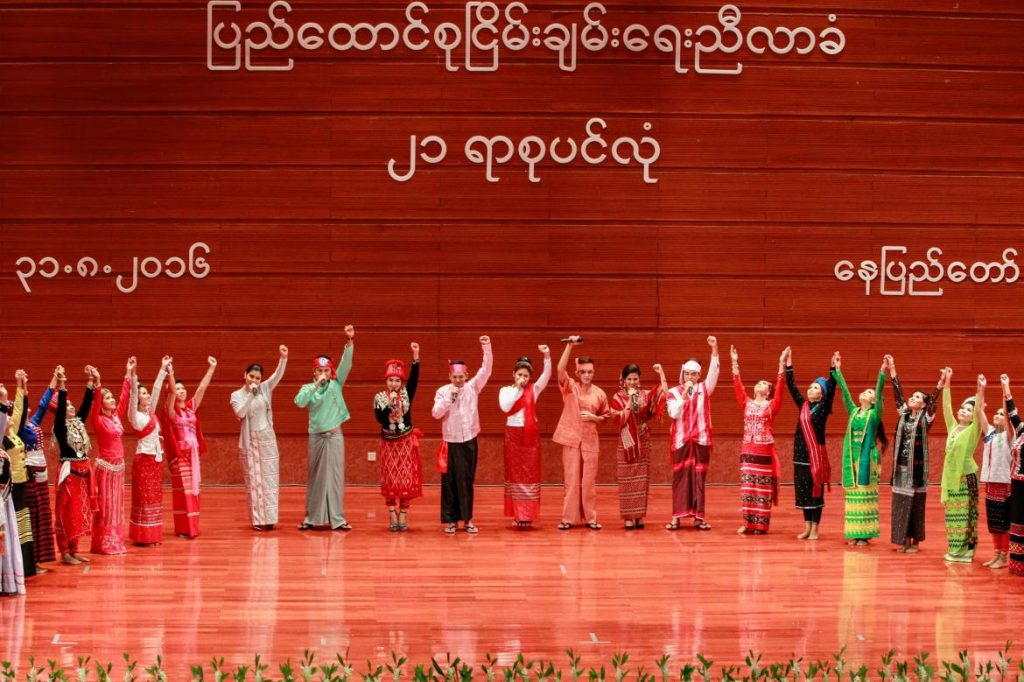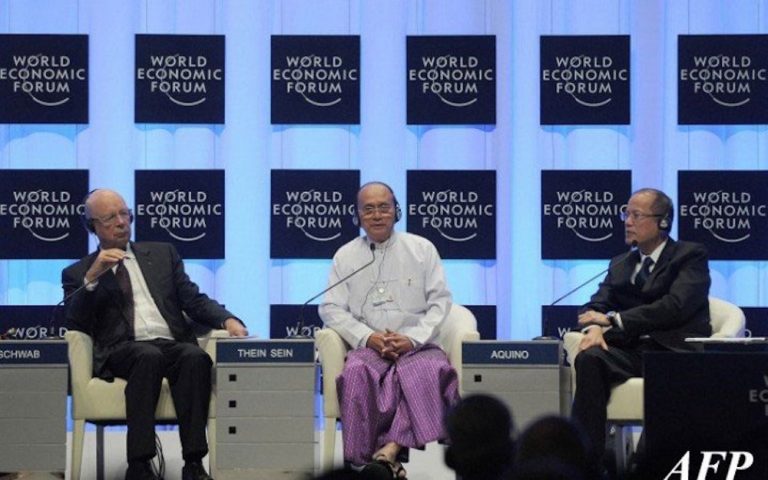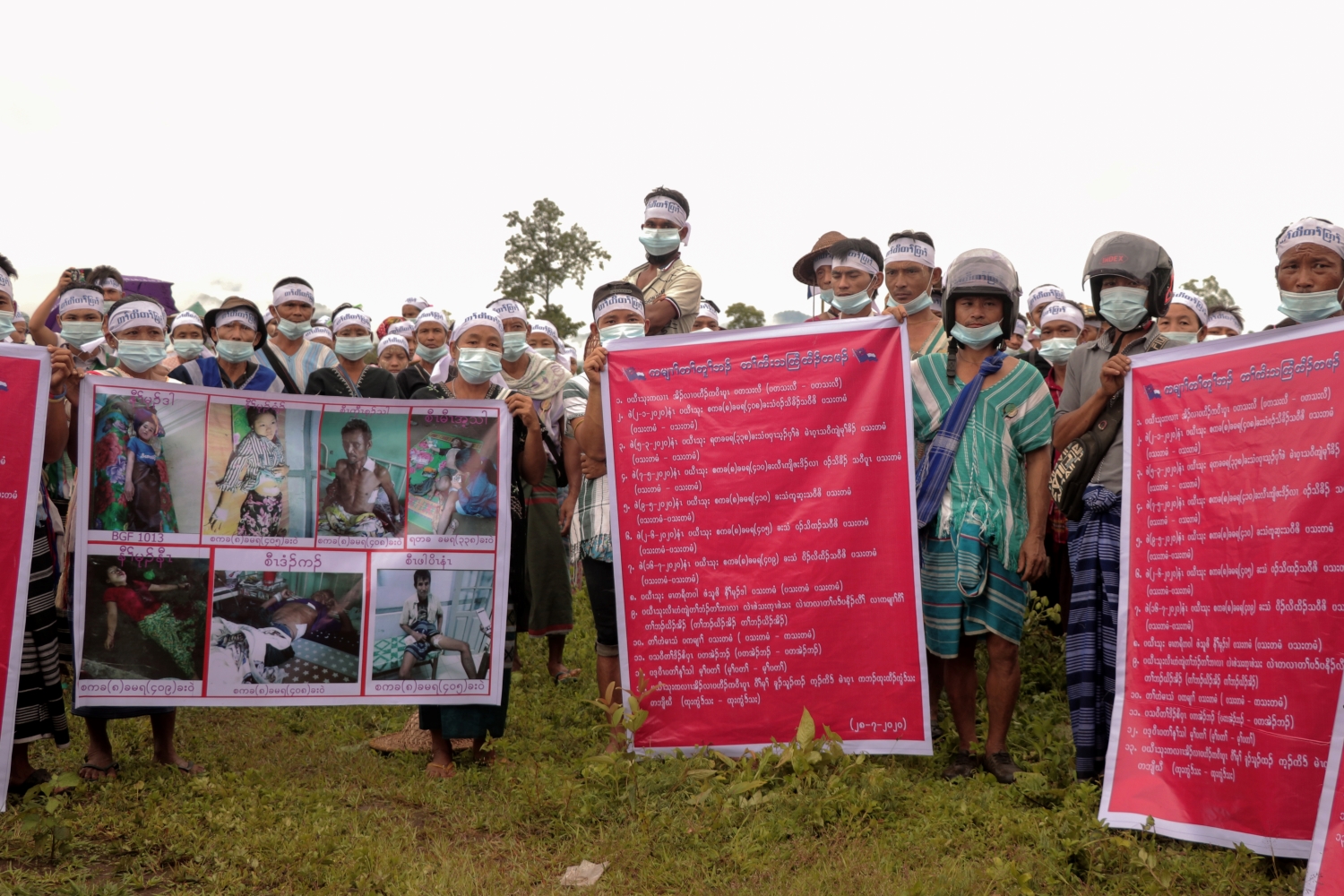As the latest Panglong conference opens today, civil conflicts in other countries show the common patterns and pitfalls on the path to a successful and sustainable peace process.
By JOHN PAUL LEDERACH, STEPHEN GRAY & MADHAV JOSHI | FRONTIER
The 21st Century Panglong Conference represents an important milestone in Myanmar’s long march to peace. But it is only one step in a much longer process to end to the violence that has long limited this country’s great potential.
The pathway forward is outlined in a framework for political dialog that has been negotiated following 2015’s Nationwide Ceasefire Agreement. This framework is geared to eventually produce a Union Peace Accord — a comprehensive peace agreement — which for many is linked to the need to develop a mutually agreeable constitution and a federal democratic union.
Based on global experience, comprehensive peace agreements take several years to negotiate and several more to fully implement, as the stakeholders navigate through multiple phases, complexities, and setbacks. The length of time that will likely be required to reach a sustainable end to the country’s conflicts will provide little consolation to the people, soldiers and civilians alike, who continue to suffer its immediate burden.
Some comfort might be taken, however, from international experience of the enormous benefits that accrue when countries negotiate and fully implement comprehensive peace agreements to end civil conflicts.
Support more independent journalism like this. Sign up to be a Frontier member.
The Kroc Institute at the University of Notre Dame in the United States maintains a database of all comprehensive peace agreements negotiated since 1989. Analysis of these agreements has been used to support peace process negotiations and implementation in multiple peace processes globally, most notably in Colombia, where Kroc is an official partner in monitoring the implementation of 2016’s comprehensive peace agreement.
It is undeniable that Myanmar’s challenges are unique, and will require novel peacebuilding approaches. Yet every country is unique, and despite that, there are common patterns, pitfalls, and priorities that can be reviewed to generate options and strategies for policy makers.
The value of negotiated settlements
In deciding between peace talks and military operations, Myanmar’s leaders are already facing a critical question: can we genuinely resolve our differences through negotiation? The international answer to this question is unequivocal. In the 31 countries that have signed and fully implemented comprehensive peace agreements since 1989, 84 percent have resisted a return to armed conflict.
In contrast, military strategies — whereby one side tries to defeat the other or pressure them to the negotiating table through the use of force — are rarely effective. A common pattern is that groups can be defeated temporarily, but return later, sometimes under new names or with different personnel.
This pattern has played out multiple times in Myanmar, including for example when the Myanmar National Democratic Alliance Army was ousted from the territory it held in north eastern Shan State in 2009, only to return in 2015, since giving rise to some of the most intense armed conflict that the country has seen in recent memory.
Internationally speaking, defeating groups militarily is less likely when there are multiple opposition forces within a country. Since 1989, no national army has defeated more than two internal opposition groups that it is fighting simultaneously. Myanmar has up to 21 ethnic armed organisations, depending upon who is counting, and no less than five of these remain engaged in active conflict.
Ending a conflict by military means is also unlikely when groups have been fighting for a long time. In international experience since 1989, the likelihood of a military solution to conflict drops to 25 percent after one year, or 10 percent after three years. In contrast, most of Myanmar’s armed resistance movements have existed for more than half a century.
Deciding between a military or political strategy to end conflict is not a simple either/or choice. Violence often can and does continue alongside negotiation processes. But in setting its sights on a comprehensive peace agreement, through the Panglong conferences and all the hard work that goes on in between, Myanmar is giving itself a fighting chance to achieve a durable peace.
Towards a Union Accord
The second critical challenge facing the country is moving beyond security-focused agreements. Myanmar has a deep history of security agreements, but these have proven insufficient in themselves to end conflict sustainably. Though most of these were never on paper or publicised, the country’s opposing groups have reached close to 50 security-related agreements since 1989. Some of these agreements were ceasefires, while others were agreements for groups to disarm or come under the auspices of the Myanmar army as Border Guard Forces or Peoples Militia Forces .
Some of these agreements have been sustainable, insofar the groups in question are no longer in conflict. But often security-based agreements break down when more comprehensive political agreements aren’t reached, as in the case of the 1994 Kachin Independence Army ceasefire.
In other cases, splinter factions emerge when security agreements don’t satisfy the political goals of all members. This is the case, for example, with the Ta’ang National Liberation Army , which emerged when some of the Palaung State Liberation Army’s leaders were dissatisfied with the group’s 1991 ceasefire agreement and 2005 disarmament. Another example is the Restoration Council of Shan State , which arose from the Shan United Revolutionary Army’s 1996 disarmament.
Agreements such as the NCA are undeniably an important step in the pathway to peace, insofar as they can provide a break in the violence, opportunities for confidence building, and new modalities for negotiation and joint decision-making. But international experience mirrors Myanmar’s own history insofar as security agreements alone prove insufficient to end fighting in most cases if additional root causes of conflict are not addressed.
Between 1989-2012, 80 percent of security-focused agreements globally have broken down if non-security issues were not also addressed. In contrast, more than 80 percent of comprehensive peace agreements between 1989-2012 — that is. agreements that include a wide range of social, economic, political and security issues — have successfully guarded against a return to violence when they are fully implemented.
Inclusion vital to success
Achieving an inclusive peace process is a third critical challenge that the country now faces. One dimension of inclusion requires increasing the participation of women and civil society organisations. This increases the representativeness of peace processes, encouraging agreements that reflect of the interests of more people, and garner maximum public buy in to sustain peace agreements through the implementation phase.
Studies of peace processes internationally have demonstrated that the inclusion of women in roles that enable them to have influence increases by 35 percent the likelihood that resulting peace agreements will last at least 15 years. The inclusion of civil society organisations, again as genuine participants and not just bystanders, can reduce the risk of a return to armed conflict by as much as 64 percent.
The second dimension of increasing inclusion, and a necessity to produce a truly nationwide peace, requires including most if not all of the groups that are involved in the fighting. Less than half of the country’s ethnic armed organisations are currently included in the NCA, which represents approximately only 20 percent of their combined troop numbers. Without the non-signatories, the potential of the country’s political dialog process to achieve a Union Accord will remain limited.
While this problem is easy to state, finding potential solutions is much more difficult. The country’s negotiators have been working hard over recent months to find ways of including non-signatories, but for the most part the necessary compromises have not materialised, while some groups — notably those that are under intense military pressure — have questioned whether an alternative to the NCA might be needed.
International and Myanmar’s own experience suggests that military pressure is counterproductive to bring non-signatories into a peace process. The question then is what new strategies or priorities might? What political will and flexibility can Myanmar’s peace process leaders employ to include current non-signatories, whether inside or alongside the NCA? What effect might improving implementation of existing agreements have?
From global experience, higher rates of peace agreement implementation is highly beneficial to this end. On average, if comprehensive peace agreements are negotiated and implemented at a rate of 75%, on average 80% of non-signatories join the process within a year.
The value of keeping promises
Peace agreements are not ends in themselves. We often neglect the importance of implementing our agreements, which is arguably even more difficult than negotiating them. This trend is currently evident in this country in the continued challenges to implement NCA provisions related to military codes of conduct, ceasefire monitoring, and interim arrangements.
Faltering implementation cannot simply be blamed on a lack of political will. International experience highlights that vagaries in the text often cause confusion or otherwise problematise the implementation phase. Capacity limitations, both in terms of financing and human resources, can limit the ability of some groups to effectively perform their roles, despite tireless efforts.
Clearly there are no simple answers to implementation challenges. But the enormous benefits that high rates of implementation have bought globally may offer encouragement to prioritise the urgency and timeliness of keeping promises, not just making them.
Internationally, agreements that are more fully implemented create a longer lasting peace. Of the 31 comprehensive peace agreements negotiated globally since 1989, every additional 1 percent of implementation corresponded to a 6 percent increase in peace duration. To use more tangible numbers, a peace agreement that was implemented at 40 percent might last for ten years. The same agreement, if implemented at 80 percent, would on average prevent a return to armed conflict for 25 years.
Much is made of the cost of peace processes, but the economic benefit also deserves attention. On average, when comprehensive peace agreements are fully implemented, a country’s foreign investment doubles over a decade, while gross domestic product increases by 5 percent. This translates to more employment opportunities and improved livelihoods for people.
The benefits to ordinary people of fully implementing peace agreements also extends to improved access to education, including on average a 17 percent and 14 percent increase in primary school enrollment for girls and boys respectively. Improved health benefits are significant also, including an average 20 percent decline in infant mortality rates. These livelihood improvements emphasise that prioritising peace is truly a national priority, not just a process to benefit the constituencies most affected by conflict, or those groups with the most grievance about the status quo.
Myanmar’s political conflicts have deep historical roots. Various constitutional proposals and revisions have attempted to forge mutually agreeable agreements, while numerous security agreements have sought to pacify armed opposition. This country’s peacemakers have since 2011 already made remarkable progress in in crossing the threshold to a more sustainable grand political bargain, through compromises, overcoming ideological differences, and trading group-specific economic and political privileges for the greater good.
Should this patient trend continue, while finding ways to overcome immediate challenges of inclusion and long-term needs for implementation, Myanmar’s people have reason to hope that the world’s longest running civil conflict may yet find a sustainable end.
John Paul Lederach is a Senior Fellow for Humanity United.
Stephen Gray is a peace practitioner living and working in Myanmar.
Madhav Joshi is a Research Associate Professor at the University of Notre Dame and Associate Director of the Kroc Institute for International Peace Studies’ Peace Accords Matrix.







